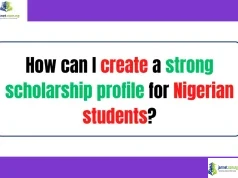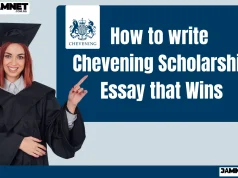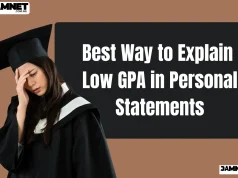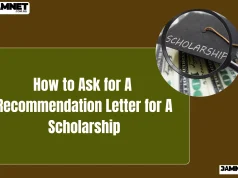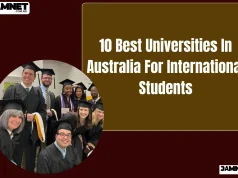Explore how to win a fully funded undergraduate scholarship abroad. This guide covers top scholarships like MEXT and Lester B. Pearson, plus key tips on building a strong application, crafting a winning essay, and preparing all your documents


Winning a fully funded undergraduate scholarship is one of the most direct and exciting ways to make your dream of studying abroad a reality without the overwhelming financial burden. This type of award covers not only your tuition, but also living costs, health insurance, and even flights, giving you the freedom to focus entirely on your studies and personal growth.

Join our Telegram Channel for Instant Scholarship Updates
Securing one of these highly sought after scholarships is a competitive process, but it is far from impossible. This comprehensive guide will walk you through the proven strategies, top scholarship programs to target, and key documents you need to build a winning application.
The Winning Strategy: Start Early and Build a Strong Profile
The single biggest mistake most students make is waiting until the last minute. The application window for most fully funded scholarships closes 6-12 months before the academic year begins. To study in 2026, your preparation and research should be in full swing by early 2025.
Know Where to Look: The Most Generous Countries
Do not scatter your efforts. Focus your search on countries and institutions renowned for offering generous funding to international students.
- United States: Many elite universities operate on a need-based financial aid system. This means they are committed to meeting 100% of a student’s demonstrated financial need, regardless of nationality. Universities like Harvard, Yale, Princeton, and MIT can provide a “full ride” that covers tuition, room, board, and other expenses.
- Canada: The Lester B. Pearson International Scholarship at the University of Toronto is a prime example. This highly selective, merit-based scholarship covers tuition, books, incidental fees, and full residence support for four years.
- Asia: Countries like Japan and South Korea have prestigious government-sponsored programs.
- The MEXT Scholarship (Japan): A government-funded scholarship that covers tuition, a monthly stipend, and a round-trip flight. It’s a gold-standard scholarship with a competitive application process through the Japanese Embassy in your home country.
- The KAIST Undergraduate Scholarship (South Korea): A university-specific scholarship for students in science and technology. It covers tuition, a monthly allowance, and health insurance.
- Europe:
- Türkyie Bursları Scholarship (Turkey): A government-funded program that provides tuition, a monthly stipend, accommodation, and even a one-time flight ticket to Turkey. It’s an excellent option with a broad range of available programs.
- DAAD Scholarship (Germany): While many are for graduate students, DAAD offers some undergraduate scholarships. Germany’s public universities also have very low or no tuition fees, making it an affordable destination even without a full scholarship.
Build Your Profile Beyond Grades
While a strong academic record (aim for a GPA equivalent of at least 80% or a high percentage) is essential, scholarships are not just about grades. They seek out well rounded individuals who show potential to be leaders and innovators. Build your profile by focusing on:
- Leadership: Taking on leadership roles in school clubs, projects, or sports teams.
- Community Service: Engaging in meaningful volunteer work that shows your commitment to making an impact.
- Extracurriculars: Showcasing unique talents or skills in areas like coding, public speaking, music, or debate.
- Language Proficiency: A high score on standardized tests like IELTS or TOEFL demonstrates you are prepared for an English-taught curriculum.
Crafting a Winning Application: Your Story Matters
Your application is your opportunity to tell a compelling story that goes beyond your transcript.
1. The Personal Statement/Essay
This is where you make a lasting impression. Avoid generic, cliché essays. Instead, focus on a single, compelling narrative.
- Be Personal: Share a specific experience that shaped you, a challenge you overcame, or a moment that sparked your passion for your chosen field.
- Connect the Dots: Clearly explain how studying abroad and this specific scholarship align with your long-term academic and career goals.
- Address the Prompt: Read the essay prompt carefully and tailor your response to the scholarship provider’s mission and values.
- Proofread: Typos and grammatical errors are a red flag. Get multiple people—teachers, mentors, or family members—to read your essay.
2. Letters of Recommendation
A strong recommendation can be the deciding factor.
- Ask Early: Give your recommenders at least a month’s notice.
- Choose Wisely: Ask a teacher who knows you well and can speak to your character, work ethic, and potential—not just a teacher from whose class you got a good grade.
- Provide a Brag Sheet: Give your recommender a list of your accomplishments in their class, extracurricular activities, and a copy of your resume. This helps them write a detailed and specific letter.
Key Documents Checklist
Organizing your documents early will streamline the application process and prevent last-minute panic.
- Official Transcripts: Your high school academic records.
- Standardized Test Scores: SAT/ACT scores, if required by your target university.
- English Proficiency Test Scores: IELTS/TOEFL scores.
- Letters of Recommendation: Typically 2-3 letters from your teachers or school counselor.
- Personal Statement/Essay: Your written statement addressing the prompt.
- Resume/CV: A detailed list of your academic achievements, extracurricular activities, awards, and work experience.
- Passport/ID: A copy of your valid passport or national ID.
By following this strategic approach, you can turn your dream of studying abroad into a tangible plan and significantly increase your chances of winning a fully funded undergraduate scholarship.
Frequently Asked Questions About Fully Funded Undergraduate Scholarships
Q1: What exactly does fully funded mean for an undergraduate scholarship?
A: A fully funded scholarship is a comprehensive financial award that covers all major expenses. This includes your full tuition fees, accommodation (on-campus or off-campus housing), a monthly living stipend, health insurance, and in some cases, even a round-trip flight to your study destination.
Q2: What is the most important step in the scholarship application process?
A: Starting your search early is the most critical step. Most scholarship deadlines are 6-12 months before the academic year begins. This gives you ample time to build a strong profile, prepare your documents, and craft a compelling application without rushing.
Q3: Besides grades, what do scholarship committees look for in a strong candidate?
A: Scholarship committees look for well-rounded students. Beyond academic excellence, they value leadership potential, community service, participation in extracurricular activities, and unique skills. Showing how you can contribute to both the university and your home country after graduation is key.
Q4: How important are standardized tests like the SAT or IELTS for these scholarships?
A: Standardized test scores are often a mandatory part of the application. A high score on tests like the SAT/ACT (if required) and English proficiency tests like IELTS or TOEFL demonstrates your academic readiness for an English-taught curriculum.
Q5: Can you give me some examples of top fully funded scholarships for undergraduates?
A: Yes. Some of the most prestigious programs include the Lester B. Pearson International Scholarship at the University of Toronto (Canada), the MEXT Scholarship (Japan), the KAIST Undergraduate Scholarship (South Korea), and need-based aid from elite US universities like Harvard and Yale, which can cover 100% of your financial need.
Q6: How should I write a personal statement that stands out?
A: Your personal statement should tell a unique and compelling story about your journey, goals, and motivations. Avoid generic, cliché statements. Focus on a single narrative, make it personal and passionate, and ensure it connects your past experiences to your future aspirations.
Q7: How many scholarships should I apply for to increase my chances?
A: You should apply to as many as you are genuinely a good fit for. Aim for at least 5-10 scholarships to significantly improve your odds of success. Remember to tailor each application and essay to the specific scholarship, rather than just copy-pasting.
Q8: What documents are typically required for a fully funded scholarship application?
A: Key documents typically include official high school transcripts, standardized test scores (if applicable), English proficiency test scores, letters of recommendation from teachers, a compelling personal statement or essay, a resume or CV, and a copy of your passport.
Q9: Who should I ask to write my letters of recommendation?
A: You should ask teachers who know you well and can speak specifically about your character, academic abilities, and potential. Give them plenty of notice (at least a month) and provide them with a “brag sheet” of your accomplishments to help them write a detailed and personalized letter.
Q10: Is it true that some universities in the US offer fully funded aid to international students?
A: Yes, many private universities in the US are “need-blind” for domestic students but “need-aware” for international students. However, some of the most prestigious schools like Harvard, Yale, and Princeton have a policy of meeting 100% of the demonstrated financial need of all admitted students, including international students, which can result in a fully funded scholarship.

